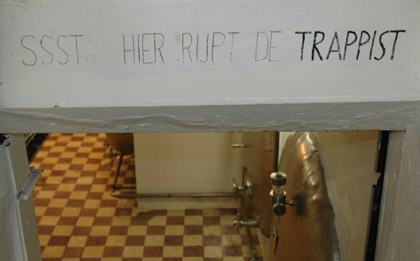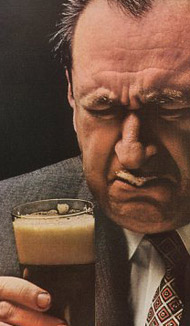InventorSpot has posted what Seth Plattner calls the 10 Best Beers with Balls of 2007. The premise is that the “beers on this list push the limits of conventional brewing.” So you get Midas Touch Golden Elixir- The King’s Beer and BILK – The Weird Guy’s Beer (since it is made with milk).
Also Westvleteren 12 – The Monk’s Beer. This entry could have used a little fact checking. Besides referring to a distributor (the monastery sells beer only at its gate and the inn it runs next door) there’s the assertion the beer is “so named due to its 12% alcohol by volume.” This despite the fact you can read 10.2% on the photo with the story.

So why Westvleteren 8 (not quite so strong) and 12? And why Rochefort 6, 8, and 10?
Until the early 1990s, Belgian brewers measured gravity in Belgian degrees. This could, and can, be calculated by subtracting 1 from a beer’s specific gravity and multiplying by 100. Thus a 1.060 beer would be 6 degrees.
Today brewers measure in degrees Plato, but the beers may take their names from the former standard. Thus, Achel referred to its initial beers as Blond 4 and Bruin 5 when it resumed brewing. Westvleteren and Rochefort also call their beers by degree numbers as well as by the color of their crown caps.
When Westvleteren 12 was introduced in the 1930s it apparently started at 12 degrees (28 °P!) and was 12% abv. These days the starting gravity is about 21.5 °P. About because it truly varies from batch to batch. When I visited the brewery I saw notes where consecutive batches started at 21.5, 21.1 and 21.7.
That’s one of the things that makes Westvleteren special. Even though these batches will be blended into a larger lagering tank after primary fermentation not every — heck, not any — Westy 12 is exactly the same. It 12 will lager until it is appropriately clear. That’s generally about eight weeks, but can be 10, the monk in charge of brewing explains, “when you get a difficult one.”
The photo at the top reflects this. Brother Filip, the brewer in the late 1990s, wrote these words that mean, “Quiet… here matures the Trappist.” They mimic a much larger sign across a warehouse at the Moortgat Brewery north of Brussels, which admonishes drivers who speed by on the adjoining four-lane road not to disturb “den Duvel.”
Belgian law permits brewers more tolerance when listing alcohol content than in the United States. The listed content may vary by 1% alcohol by volume, compared to .3% in the States. The Westvleteren 12 will be between 10% and 10.5%
 Apparently the judges for the
Apparently the judges for the